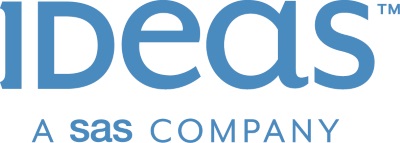
The one thing killing your revenue strategy
By cameron in Uncategorized
There’s no denying that ideal pricing is important to an intelligent revenue strategy. A hotel’s pricing strategy significantly contributes to profitable revenue management approaches, with surges in technology, social media and online booking platforms providing sheathes of data to incorporate into pricing decisions.
NB: This is a viewpoint by Blake Madril, revenue technology strategist at IDeaS Revenue Solutions.
Relevant market data such as reputation information, competitive market pricing and travel intent data are common examples of industry intelligence used in advanced revenue technology to optimize pricing.
However, it’s key to recognize there’s more to revenue management than just pricing considerations – and hotels that only use their revenue technology to adjust rate could be losing out to today’s number one revenue killer: a lack of automated inventory controls.
Think about a city center hotel forecast to sell out on a Tuesday and Wednesday. Continuously increasing price – when the hotel faces not only stiff market competition but also fair price perceptions – runs the risk of leaving high demand rooms unsold. Looking past charging skyrocketing prices, how can hotels profitably yield during high demand time periods through flexible inventory controls?
Hotels historically managed their inventory through the use of manual controls in property management and reservations systems, and most automated revenue management systems still give a similarly archaic method of utilizing these controls.
But hotels that can’t go beyond manual inventory management can’t maximize their revenue management strategy.
Demand and pick-up shift constantly, and a strategy at the beginning of a work day may not be the same strategy at the end of the day. In a manual environment, hotels do not have the time to constantly validate technology that should be adapting to the demand in the market on its own.
Technology that still utilizes manual controls only allows hotels to account for high demand days with either a Closed to Arrival (which restricts business on those days) or a minimum length-of-stay control for either night.
While the former helps restrict one- or two-night bookings over high demand days, what happens to the guest checking in on Tuesday and staying for six nights? How would the hotel keep from turning them away, while also offering availability that isn’t open to a guest staying for only two nights?
Using the latter option means the hotel could put a three-night minimum length of stay on Tuesday and a two-night minimum on Wednesday. However, then someone could check in on Wednesday for two nights, but a guest checking in on Monday for two nights would be turned away.
These rules-based controls not only hold hotels back from achieving their most profitable results but also require a lot of time, management and manual deployment from the revenue team. Simply said, inventory controls that set inflexible blanket rules for an entire day cannot maximize hotel profitability.
Automated inventory controls are flexible and evaluate the value of each unique reservation inquiry – accounting for an increased expectation of demand fluctuation and price agility.
Hotels relying on setting manual inventory rules not only fall victim to this number one revenue strategy killer, but they also lose out on the profits and market share their competition is gaining.

NB: This is a viewpoint by Blake Madril, revenue technology strategist at IDeaS Revenue Solutions. It appears here as part of Tnooz’s sponsored content initiative.
NB2: Image by BigStock
![]()

